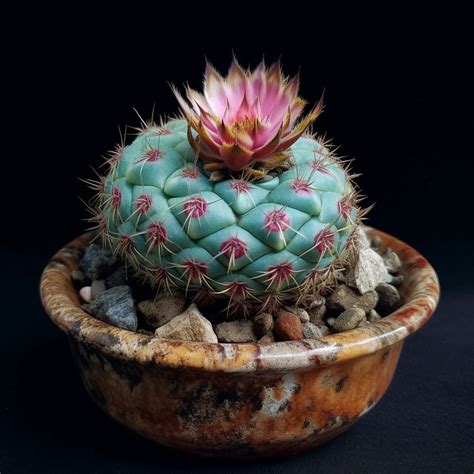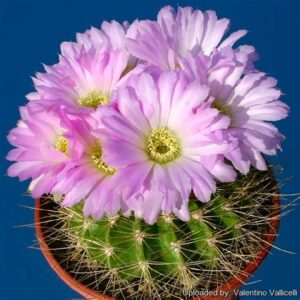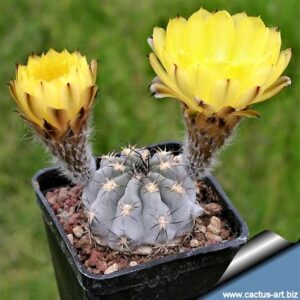Acanthocalycium, a genus of cacti originating from South America, particularly Argentina, has captured the attention of plant enthusiasts around the world. Known for their unique cylindrical shape and spiny exterior, these succulents offer not only aesthetic appeal but also an intriguing challenge for cultivation. This article provides a comprehensive care guide for Acanthocalycium cacti, addressing the essential needs and potential concerns for optimal growth and maintenance.
Understanding the needs of Acanthocalycium cacti is crucial for both novice and experienced gardeners. Not only are these plants visually striking, but their specific care requirements can significantly impact their overall health and longevity.
Environmental Conditions: Creating the Ideal Habitat
To thrive, Acanthocalycium cacti require a suitable environment mimicking their native habitat. This involves a combination of appropriate light, temperature, and humidity levels.
Light Requirements
These cacti prefer bright, indirect sunlight. Direct sunlight can scorch their skin, leading to unsightly blemishes and ultimately, plant decline. Ideally, a south-facing window provides the optimal amount of light for these plants. However, during the peak summer months, it may be beneficial to filter the sunlight using sheer curtains or moving the plant slightly away from the window to prevent overexposure.
Temperature Considerations
Acanthocalycium thrive in warmer conditions, with optimal temperatures ranging from 70°F to 100°F (21°C to 38°C) during the day. At night, they can tolerate cooler temperatures but should ideally remain above 50°F (10°C). It’s essential to protect these cacti from sudden temperature fluctuations and cold drafts, which can harm their delicate structure.
Humidity Levels
While Acanthocalycium cacti are accustomed to dry environments, maintaining a slight humidity level can be beneficial during the growing season. Ideal humidity levels range from 30% to 50%. If the air in your home is excessively dry, especially in winter months, consider using a pebble tray filled with water to slightly elevate humidity without directly saturating the plant.
Soil Composition: The Foundation of Healthy Growth
The foundation of a thriving Acanthocalycium cactus is quality soil. Lightweight, well-draining soil is critical to prevent root rot, a common concern among cactus caretakers.
Selecting the Right Soil
A specialized cactus mix is highly recommended, as it is formulated to balance drainage and moisture retention. Alternatively, you can create your own mix using equal parts potting soil, coarse sand, and perlite or pumice. This combination promotes aeration and ensures that excess water has a pathway to escape, keeping the roots dry and healthy.
Repotting: When and How
Repotting Acanthocalycium should be undertaken every two to three years, or whenever the plant outgrows its container. Signs that repotting is necessary include roots emerging from the drainage holes or stunted growth. When repotting, gently remove the cactus from its pot, shake off old soil, and inspect the roots for any signs of rot. Trim away any damaged roots with sterilized pruners before placing the plant in fresh soil.
Remember to choose a pot that provides adequate drainage. Terracotta pots are preferred because they wick moisture away from the soil, reducing the risk of overwatering.
Watering: Striking the Right Balance
Watering Acanthocalycium cacti can be a delicate balancing act. A common misconception is that cacti do not require water; in fact, proper hydration is essential for growth.
Watering Schedule
During the growing season, typically from spring to early autumn, water when the top inch of soil is dry. This usually translates to watering every two to three weeks but may vary based on environmental factors such as temperature and humidity. Always check the soil moisture before watering, as excessive hydration can lead to root rot.
In the dormant winter months, reduce the watering frequency considerably, only hydrating the plant every four to six weeks. Ensure the pot doesn’t retain standing water. If you’re uncertain, err on the side of caution—it’s better for the cactus to be slightly underwatered than overwatered.
Signs of Overwatering
Be vigilant for signs of overwatering, including yellowing or wilting of stems and a mushy texture. These are indications that rot may be setting in. If detected early, repotting into dry soil can sometimes salvage the plant.
Fertilization: Nourishing Your Acanthocalycium
While Acanthocalycium cacti don’t require frequent feeding, adequate nutrients during their active growth period will promote robust health and blooming.
Choosing the Right Fertilizer
Select a balanced, water-soluble fertilizer formulated for cacti and succulents, diluted to half strength. Fertilize once a month during the growing season to provide essential nutrients, particularly nitrogen, phosphorus, and potassium. Avoid fertilizing during the dormant winter months to prevent stress on the plant.
Signs of Nutrient Deficiency
If your Acanthocalycium cactus displays stunted growth, pale coloration, or lack of blooms, it may require additional nutrients. Adjusting the fertilization regimen can often resolve these issues.
Common Pests and Problems: Proactive Prevention
While Acanthocalycium cacti are generally hardy, they can be susceptible to pests and diseases if not properly cared for or monitored.
Pest Identification and Treatment
Common pests include mealybugs and spider mites, which can undermine the health of your plant. Inspect regularly for signs of these pests. If found, treat the affected areas with insecticidal soap or neem oil to eliminate the infestation.
Disease Management
Root rot, often a byproduct of overwatering, is a prevalent disease affecting Acanthocalycium cacti. Ensuring proper drainage and watering practices is key to prevention. If rot occurs, remove the affected part of the cactus and repot the plant in fresh, dry soil.
Conclusion: A Stunning Addition to Your Collection
The Acanthocalycium cactus offers both beauty and a rewarding cultivation experience. By understanding their unique environmental needs, watering requirements, and how to manage pests effectively, you will foster a thriving Acanthocalycium in your home. Whether you are looking to begin your cactus collection or enhance your existing assortment, these cacti can be a wonderful addition. With the right care, you can expect healthy growth, unique blooms, and an impressive centerpiece for your collection.





Leave a Comment